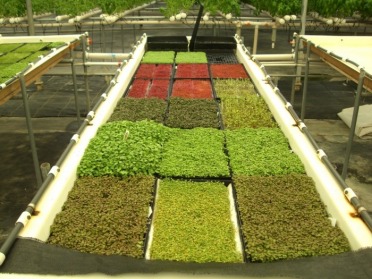Nevada is looking to a brand new industry to boost economic growth – indoor agriculture.
Many experts view indoor food cultivation – using methods such as hydroponics and aeroponics – as a significant emerging industry, necessary to feed the world’s growing population. And the industry is wide open – it’s so small in the US that the Department of Agriculture doesn’t even bother to keep records on that category.
For Nevada, it could smooth out swings in its vital tourism industry. And it could also feed the 40 million tourists it hosts each year, instead of sending $2 billion out of the state to import vegetables, fruit and other food.
State officials are actively wooing at least 10 agricultural businesses with tax incentives to locate in Nevada, reports the Associated Press.
At the state’s first indoor agriculture conference this year, 250 scientists, farmers and entrepreneurs coalesced around the industry. And Nevada’s Governor is visiting Israel next month – the leader in non-traditional farming techniques.
How will the world feed a growing population in the future as water resources dwindle and the soil is exhausted? Indoor cultivation is the answer, Navin Twarakavi, a soil scientist at Nevada’s Desert Research Institute, told Associated Press. "It is not an economic option, it’s a necessity."
When food is produced indoors, the water needed is just 7-15% of traditional farming, he says, which is crucial for water-scarce Nevada. "Water is so stressed in southern Nevada that literally every drop is being fought for," Twarakavi told Associated Press.
Although only 40 acres of indoor crops are currently grown in Nevada, they demonstrate the variety of crops that could be produced this way.
Nevada-based Hydro Greens, for example, grows herbs and greens including basil, arugula and chives using hydroponic methods at a 30,000 square foot greenhouse located less than an hour from the Las Vegas Strip.
This photo shows one of the flats used to grow microgreens.

Windset Farms’ hydroponics greenhouse grows premium cocktail cucumbers, tomatoes and peppers.
Indoor agriculture has been slow to take off because of the expense of sophisticated climate control systems. Greenhouses can be energy intensive, requiring artificial lighting and air conditioning to create optimal growing conditions. But advances in LED lighting and renewable energy are making it much more cost-effective. And indoor farms don’t have to worry about frosts and pests.
And interest in urban farming, vertical farms and other sustainable methods of cultivation is growing as more cities and communities seek to prioritize local food sources.
Check out Hydro Greens website:

 Loading...
Loading...
We should all vacant land and plant fruit bearing trees and plants that willl keep on giving for years to come. That how ou far fathers live.